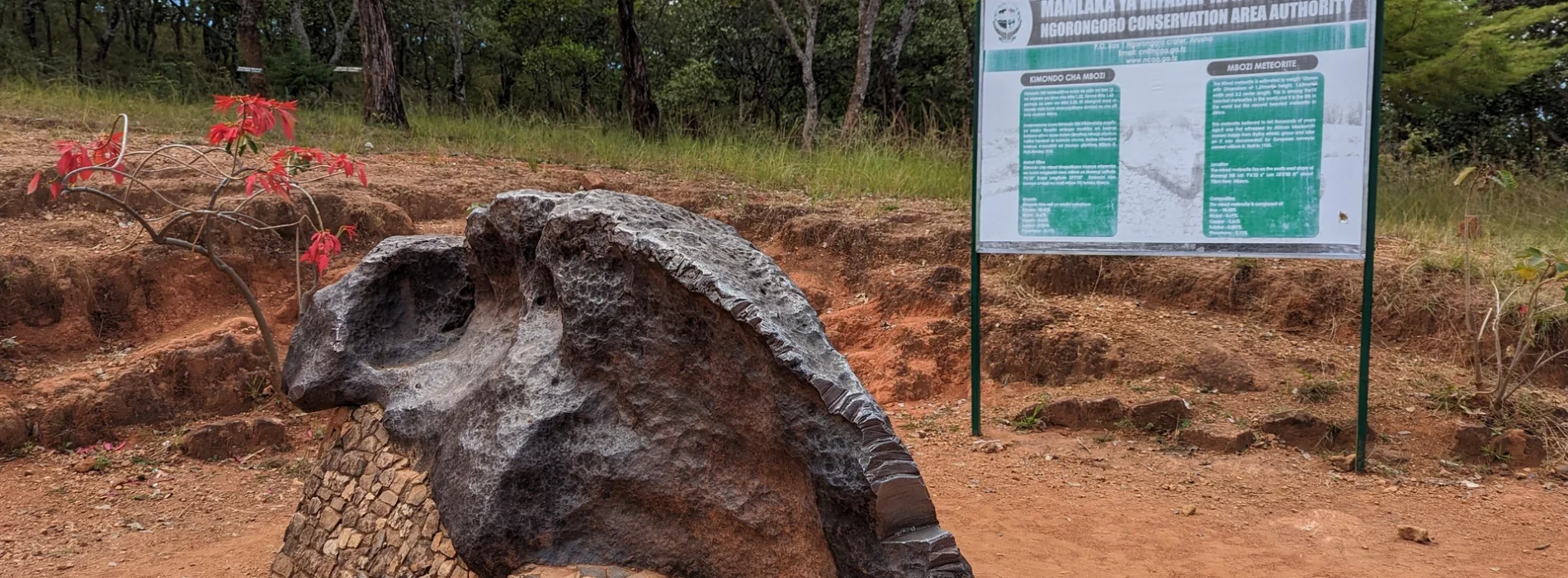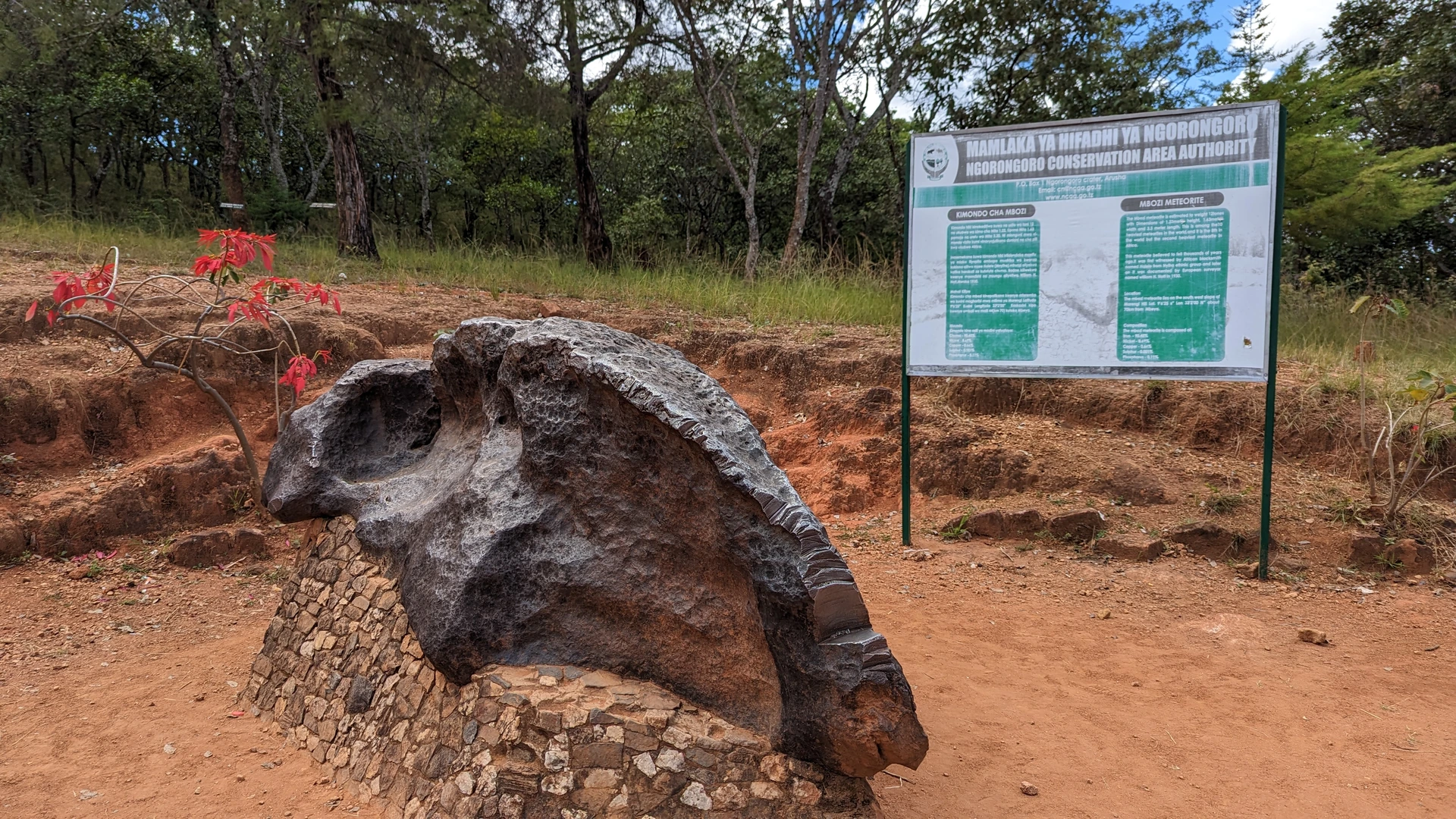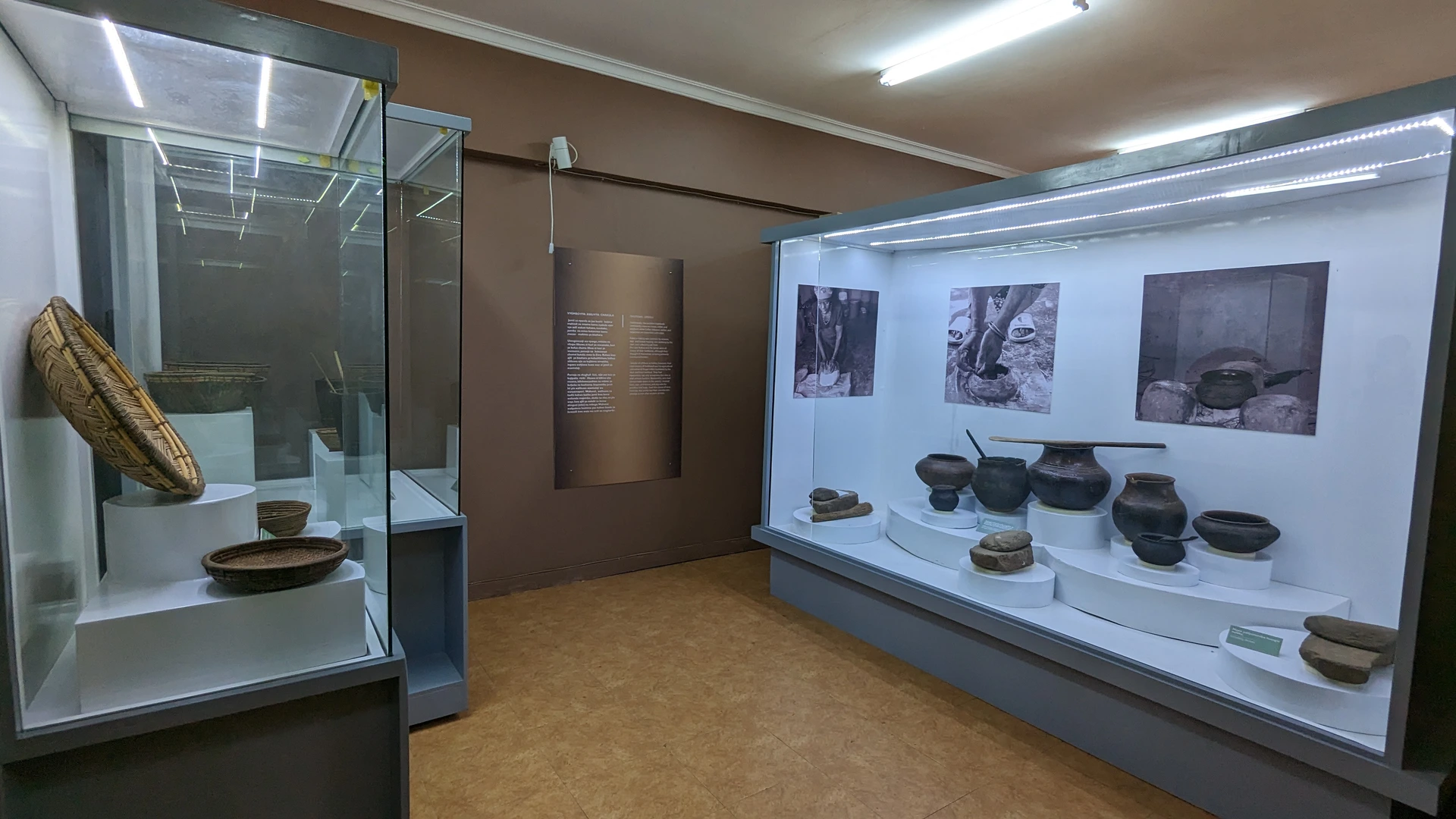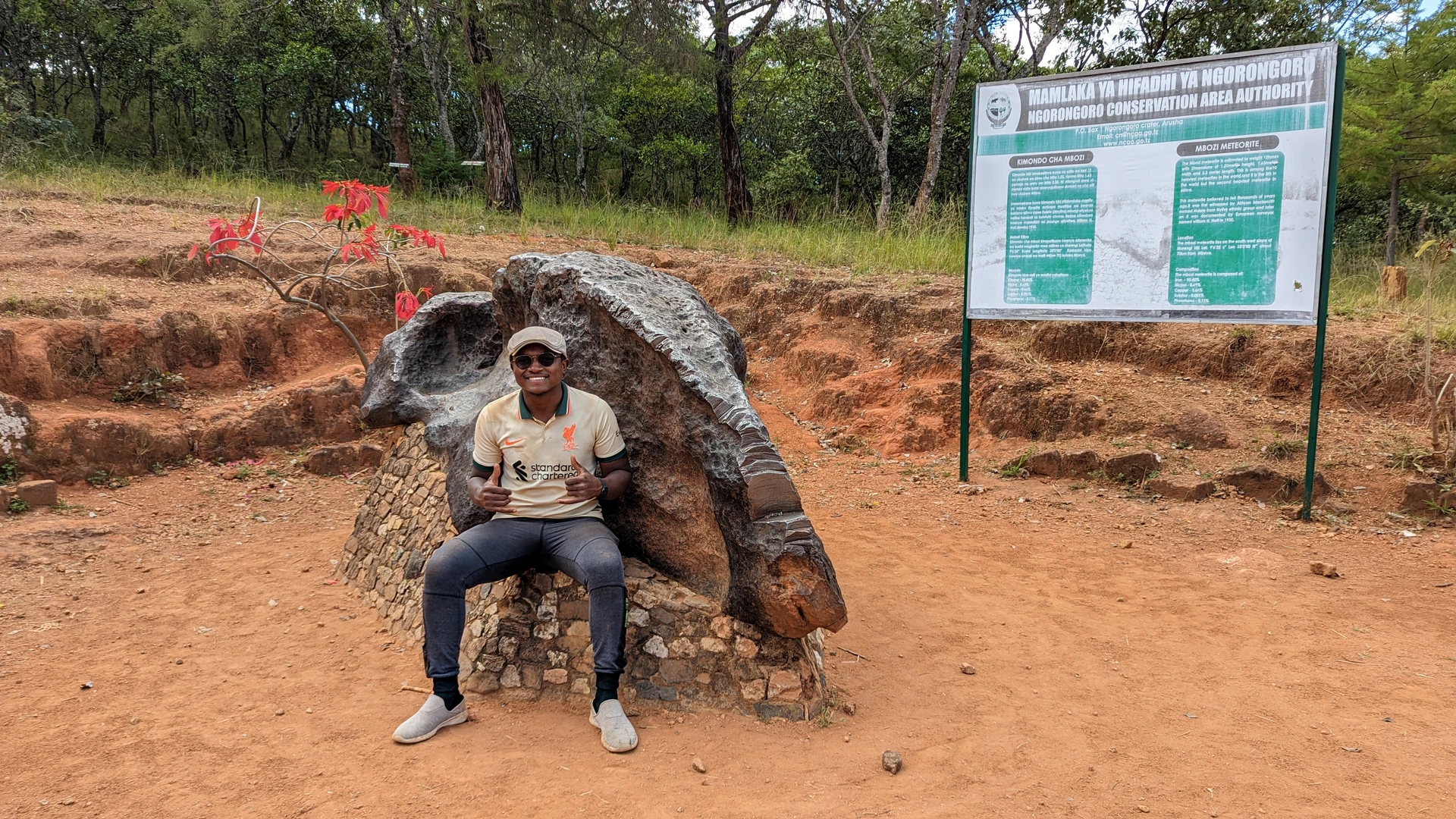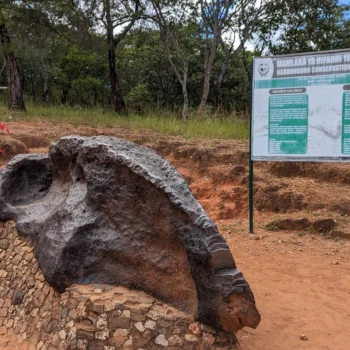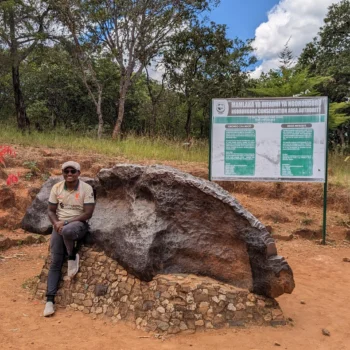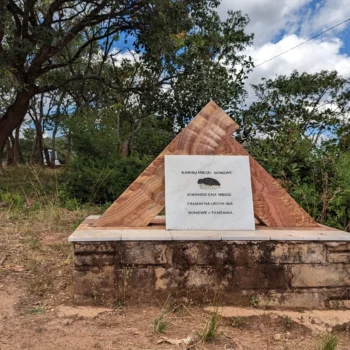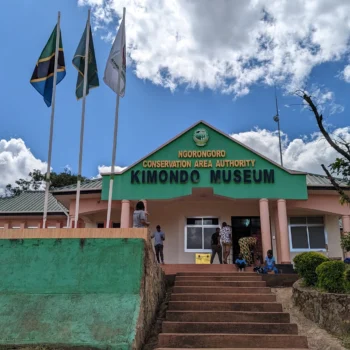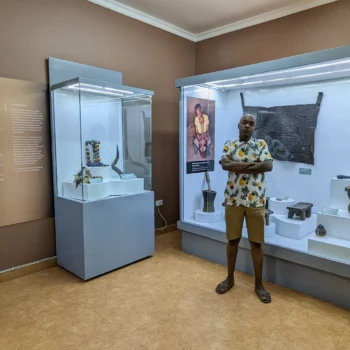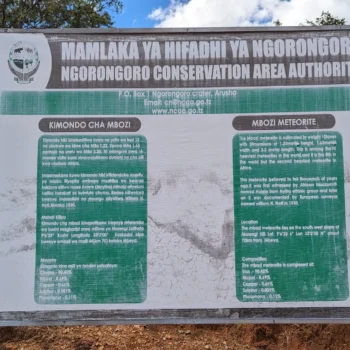Mbozi Meteorite
The Mbozi Meteorite represents a remarkable specimen of cosmic origin, situated in the Mbozi within Tanzania’s southern highlands. This substantial ungrouped iron meteorite ranks among the largest discovered globally, estimated within the ten heaviest meteorites known. In Africa, it ranks just second to Hoba meteorite in Namibia. Its dimensions are considerable, measuring 3.3 meters in length, 1.2 meters in height, and 1.6 meters in width, with an estimated mass of 25 metric tons.
While local knowledge of the meteorite predates its formal scientific discovery – reportedly known for centuries by the Nyiha tribe, with a blacksmith named Halele being an early witness – the Mbozi Meteorite was officially documented in 1930 by William H. Nott, a European surveyor.
The meteorite’s location was on the southwestern slope of Marengi Hill, and only the upper portion of the meteorite was visible above the terrain. Subsequent excavation of the surrounding slope was necessary to fully expose the object. This process resulted in a pillar of undisturbed earth beneath the meteorite, which was later reinforced with concrete to serve as a stable foundation.
The Mbozi Meteorite’s composition is predominantly iron (approximately 90%), with a significant nickel content (around 8%) and trace amounts of phosphorus and other elements. Its classification as an ungrouped iron meteorite indicates that its characteristics do not align with any of the established categories of iron meteorites, making it a particularly unique and scientifically valuable find.
Interesting Facts About Mbozi Meteorite
- It is the second heaviest meteorite in Africa, after the Hoba meteorite in Namibia and the fourth heaviest in the world
- It is the first scientifically recorded meteorite fall in East Africa.
How to Get There
The best way to get there is by car, either from Mbeya (where you may rich by flight, train, or car) or from elsewhere. The drive from Mbeya takes about 1-hour using private transport. There are also public buses, but the journey takes a bit longer. Once you reach Vwawa or Mlowo, small towns off Tunduma road, you will need to take a turn to Ndolezi village where the meteorite is found – about 12 kilometers from the main road. There is a signposted turnoff from the main road that leads to the meteorite.
